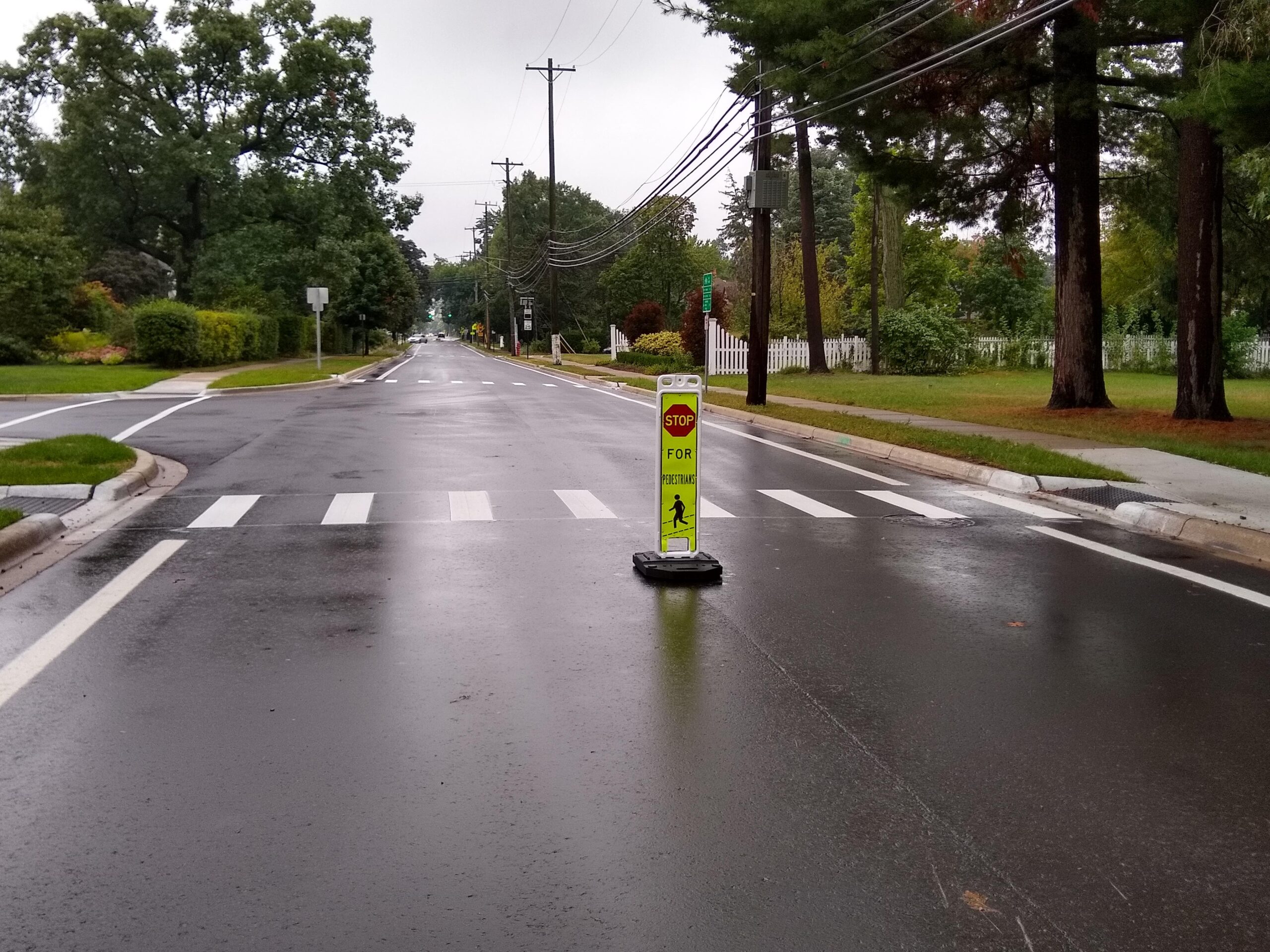City Hall will be open from 8 am – 3 pm Monday, June 26 through Thursday, June 29 due to staffing limitations.
City Hall will be closed on Monday, July 3 and Tuesday, July 4 in observance of Independence Day.
Tax bills will be mailed soon. Payments may be mailed, left in the drop box, or returned in-person to City Hall starting July 5.
The new Pleasant Ridge Arts Council seeks civic-minded, art-loving individuals who want to support the community and bring positive change to Pleasant Ridge. The Pleasant Ridge Arts Council will be dedicated to enriching the culture of our City by providing civic, educational and creative experiences. As part of its mission, the Arts Council will:
- Promote community involvement in the arts
- Foster art education and appreciation
- Build excellence in place, expand the public realm, and add value to the community
- Create a canvas for local and regional artists and creative thinking, and
- Enhance Pleasant Ridge as a place to live artfully.
The Arts Council will be an official body of the City with members appointed to staggered three year terms, with each member being able to serve for two terms. The Arts Council will work with the City Commission and staff to create and implement the City’s arts program. The City and the Pleasant Ridge Foundation have committed to provide seed funding to help establish the arts program. The City has dedicatead its marijuana excise tax revenue for this year to the Arts Council, and the Foundation will be donating funds raised at this year’s auction.
It is envisioned that the arts project will include both indoor and outdoor art, including all types, styles, and mediums of art. It is also envisioned that educational programming will be a part of the arts project for residents of all ages. The Arts Coucil will have the opportunity to take the City’s initial brainstorming ideas and determine how the arts program is implemented over time.
If you are interested in applying to be a member of the Arts Council, please apply online today at www.cityofpleasantridge.org/boardapplication. The City Commission will make appointments to the Arts Council in May or June of this year.
The Water Infrastructure Citizens Advisory Committee has completed its work and delivered a recommendation to the City Commission. The City Commission received the recommendation on April 12, and is taking that under advisement as it develops the City’s June 30, 2022 through July 1, 2023 budget (referred to as Fiscal Year 2023 or FY23 from this point forward).
- Click Here for the CAC’s Final Report
- Click Here for the CAC document library, including meeting agendas and minutes, background information provided to the CAC, and working documents including a funding scenario tool used by the CAC to test different scenarios
CAC Recommendation
The CAC made a recommendation to fund the water infrastucture project using three components to each raise one-third of the necessary revenue. For FY23, that revenue need will be about $900,000, so each component would generate about $300,000 of revenue. The CAC considered many options before arriving at their recommendation. The CAC was also focused on reducing the spread between the lowest and highest cost for households in the City. Under the full 3.5 mill option, the highest annual cost increase was $1,771 while under the CAC’s recommended option the highest annual cost increase would be $1,314, a reduction of 26%.
If the CAC’s recommendation is implemented, the three components will be as follows in FY23:
- Millage. A millage of about 1.7 mills will generate the necessary revenue. This slightly less than half of the 3.5 mills approved by the voters in November, 2021.
- Flat Ready-to-Serve Charge. A flat RTS of about $44.00 per water billing period will raise the necessary revenue. In FY21 the RTS was $42.50 per water bill, and in current FY22 the RTS is $82.50 per water bill.
- Front-Foot Charge. A new charge will be added to water bills based on the width of each property. Each resident will pay about $0.77 per front foot per bill to raise the necessary revenue (we are converting the CAC’s annual front foot charge into a per-bill charge). The CAC included this new charge as a way of apportioning costs proportionately based on a characteristic of the property that has a proportional relationship to the cost of water main infrastructure. Properties will be capped at 100 feet wide for the purpose of this charge. 31 properties in the City are wider than 100 feet.
The CAC also recommended that each component be adjusted equally to maintain a one-third funding share if the City receives external funding that reduces the cost of the project, or if costs increase and additional revenue is needed.
The CAC considered water usage rates as a method for raising infrastructure revenue, but did not include that method in their recommendation. Water usage rates will be reduced for FY23 compared to FY22.
Next Steps
The City Commission is in the process of reviewing the FY23 budget, which includes the millage and water rates. The budget and water rates will be introduced at the May 10 City Commission meeting, with a budget public hearing on June 14.
If approved the average water customer will see a 7.75% reduction in water/utility bills with an increase on property tax bills. The amount of the property tax increase will depend on each property’s taxable value and the City’s final FY23 millage rate, which includes the water infrastructure millage and all other City, Ferndale School, Oakland County, and other taxing jurisdiction millages.
The final test project on Woodward Heights is a speed hump, located at Bermuda (south) by the Heights Market. This location was chosen as it is a gateway entrance into the City. The speed hump will slow down traffic entering the City.
The City Commission will be considering whether to make this speed hump permanent at their September 8 meeting. In the meantime, we will be measuring traffic speeds at various distances from the hump to see how it influences traffic speeds.
If you have ever wanted a speed hump on your street, this is an excellent opportunity to go out and see, hear, and feel what is is like to live next to a speed hump. While it does limit traffic speed, there are noise impacts from these. As such, we will be surveying the residents who live within 300 feet of the test speed hump to obtain their thoughts.
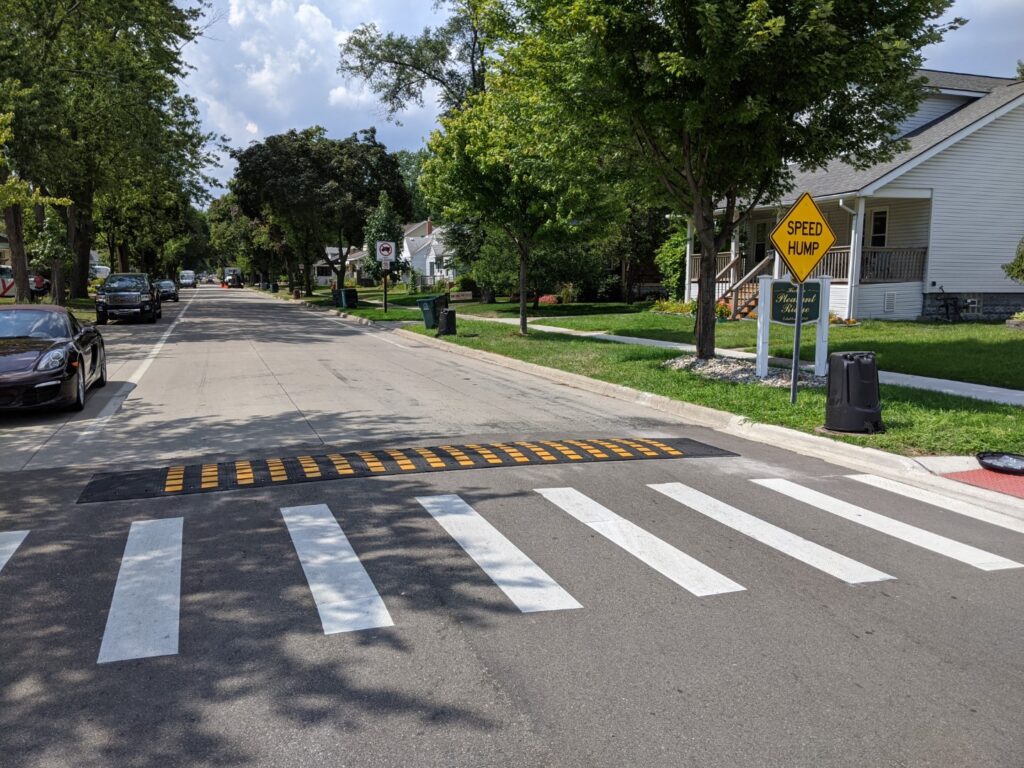
Please see the following from the 45th District Court:
In light of Governor Whitmer declaring a State of Emergency in Michigan regarding the COVID-19 outbreak, the 45th District Court is modifying its usual operations and procedures as described below until further notice to ensure the health and safety of the community, while continuing to provide access to justice.
- Currently scheduled cases that can reasonably be postponed are being adjourned for 60 days. If a case is being adjourned, you will be notified by the court.
- If you receive a traffic ticket, contact the court by phone for further instructions.
- All jury trials are adjourned. No jurors are required to report.
- All individuals on probation must contact their Probation Officer by phone or e-mail for instructions on how to report in the future.
- Until further notice, all walk-in arraignments are cancelled.
- No weddings will be scheduled until further notice.
- If you have a court date that has not been adjourned, but you are unable to attend, you may contact the court by phone and request an adjournment.
- If you must report to court, please refrain from bringing any unnecessary people with you.
Please consider the health of your fellow citizens and our court personnel. If you suspect you may have coronavirus or believe that you have had contact with someone who may have coronavirus, please refrain from entering the courthouse. If you have any questions, please call 248-691-7440.
The survey is closed and the results are in. Click Here to view the full survey results.
Overall, about 75% of residents are satisfied with curbside leaf pickup. About 30% think it’s great, 48% think it’s okay, and the remaining 22% find it unsatisfactory.
There were a few recurring themes from the survey comments, which are consistent with what we hear from residents during tougher leaf pickup seasons like the one we just had. Below is a summary of those themes and what we’re doing to address them.
- Extend leaf pickup later into December.
This is the most frequent comment/request we receive. We understand completely, as the Oak trees notoriously hang on to their leaves longer and often don’t drop completely until mid-December or later. In fact, this is why Zone 5 consists of Oxford and Cambridge and is scheduled last for pickup. Those streets contain the highest concentration of Oak trees, and so we schedule them last for pickup to try to let as many leaves fall before the leaf trucks make their final pass.Of course, there are many Oaks in all parts of the City, and many trees than hang on to their leaves. However, the leaf pickup schedule has been developed over many years based on weather patterns. The weather is unpredictable from one year to the next, and while some Decembers are mild, others can bring early significant snowfalls that end leaf pickup. From a risk management perspective, we always want to be done with leaf pickup before the first December snowfall. If we extend leaf pickup, most years we would probably be able to pick up all of the leaves, but when we get early snowfalls and some streets had not yet been picked up, we would not be able to get those leaves. Those leaves would be pushed up onto the lawn and driveway approaches by the snow plows, creating a mess for the residents on those streets.Most Cities observe the same schedule that Pleasant Ridge does, with leaf pickup ending on the first Friday in December. Berkley, Clawson. Birmingham, Pleasant Ridge, Ferndale, Grosse Pointe, Grosse Pointe Farms, Livonia, Oak Park, Huntington Woods all conclude leaf pickup by the first Friday in December.
Dearborn and Grosse Pointe Woods pick up until the second Friday, and Royal Oak picks up until the third Friday.
An option would be for us to start leaf pickup on the first Monday in November and go a week later in December, with the understanding that if we get a snowfall during that second week of December, any remaining leaves would most likely not be picked up. No decision has been made on this, but from a risk management perspective Staff’s preference would be to keep the schedule as it. We know that we would have many very unhappy residents on streets in the years when snow covered leaves get plowed back on to the lawn and are not picked up.
- Have Brilar allocate additional resources and equipment to Pleasant Ridge/pick up more often/find a different contractor.
These comments generally relate to contractor performance and/or resources. In short, Brilar has three leaf machines and other clients besides Pleasant Ridge. The benefit of contracting out DPW services is that we can gain efficiencies and cost savings, but the drawback is that we share our contractor with their other clients. Brilar usually has at least two and sometimes three of their machines running in Pleasant Ridge, but realistically we cannot expect additional manpower or equipment resources from Brilar.It is also difficult to find contractors with the capacity to pick up the volume of leaves that we generate in Pleasant Ridge. We produce half as many leaves as Ferndale, while we are 10% of their size. We produce one third as many leaves as Oak Park, but are 8% of their size. Our leaf volume is too large for us to engage a neighboring community to pick up our leaves, and we would always be second priority to their own streets.We are often told by a small percentage of residents that we should get a new contractor, but 1) it is not clear that there are any that have the capacity to replace Brilar, and 2) Brilar has always got the job done for us. Specifically, the City of Beverly Hills experimented with curbside leaf pickup four years ago. They put a bid out and ended up choosing Brilar, as none of their other responses were competitive or had the capacity to provide services. That leaf pickup season ended up being very difficult for Beverly Hills, Pleasant Ridge, and Brilar because they were stretched too thin trying to pick up both cities. Beverly Hills did not continue curbside leaf pickup after that one season.
One option that we could explore would be to maintain Brilar as our bring on a supplemental contractor to add leaf pickup capacity. This could allow us to more quickly complete a pickup of the City. Currently with Brilar’s capacity we can usually pick up 2-3 streets per day, so that’s 8-10 days to complete a pass through the City. This is also why it can sometimes be a while between when we say the last day to put leavers at the curb is and when the final leaves are picked up. Bringing in a supplemental contractor may allow us to pick up the entire City in a week, allowing us to back up the last day to put leaves at the curb a week later (until the first Sunday in December instead of the last Sunday in November).
Of course, there would be an additional cost to this, so we will continue to explore this option to see if there are contractors we could bring in and then discuss the desirability of adding capacity and cost with the City Commission.
- Stick to the schedule and communicate changes better/Woodward Heights.
We did adjust the schedule for the final pickup this year. We moved Zone 5 up to occur before Zone 4’s final pickup. The reason we did so was because Zone 4 was picked up the week before thanksgiving, while Zone 5 had not been picked up since early November. The leaf piles on Cambridge and Oxford were much larger than those on the Zone 4 streets.Except…that Woodward Heights did not get picked up the week before Thanksgiving and requested that Brilar to pick up Woodward Heights when they did Zone 5. Brilar did not do this and the leaves sat on Woodward Heights. We have had issues with Brilar picking up Woodward Heights in previous years, also. We do not have a good answer for why this frustrating pattern exists, but we will be again discussing it with Brilar when we post-mortem leaf season with them in a few weeks.
In future years we will be rotating when zones are picked up so that certain streets are not always first, and others always last. We’ll still probably keep Zone 5 last always due to the concentration of oaks there, but we’ll also look at how we address Woodward Heights and Ridge since these streets carry some of the highest traffic volumes in the City and can become constricted by leaves. One option we are considering is to place Woodward Heights and Ridge in their own zone and scheduling that zone for more frequent pickups to keep those streets clear.
We hope that the above gives some clarity about why leaf pickup is scheduled the way it is, the issues and concerns we have with making changes to the schedule, the capacity constraints we have and must consider when planning leaf pickup, and what we may change in future years.
We’re looking for input on how you thought this challenging leaf season went. We’ll use this input to find ways that we can improve leaf collection next year. The survey is short – two questions – and will be open until Friday, December 20.
Click on the link below to go to the survey:
Leaf Collection End of Season Survey
Hartwell Cement has been contracted by the City to remove and replace degrading joints on our streets. They will be working throughout the City over the coming weeks. All streets will remain open and passable during this project, but the streets will be narrowed while they are working.
The replacement project is focusing on areas where the joint between concrete slabs is degrading along most or all of the joint. Corner areas that have been spray patched are not being replaced at this time. All areas to be replaced have been marked with spray paint.
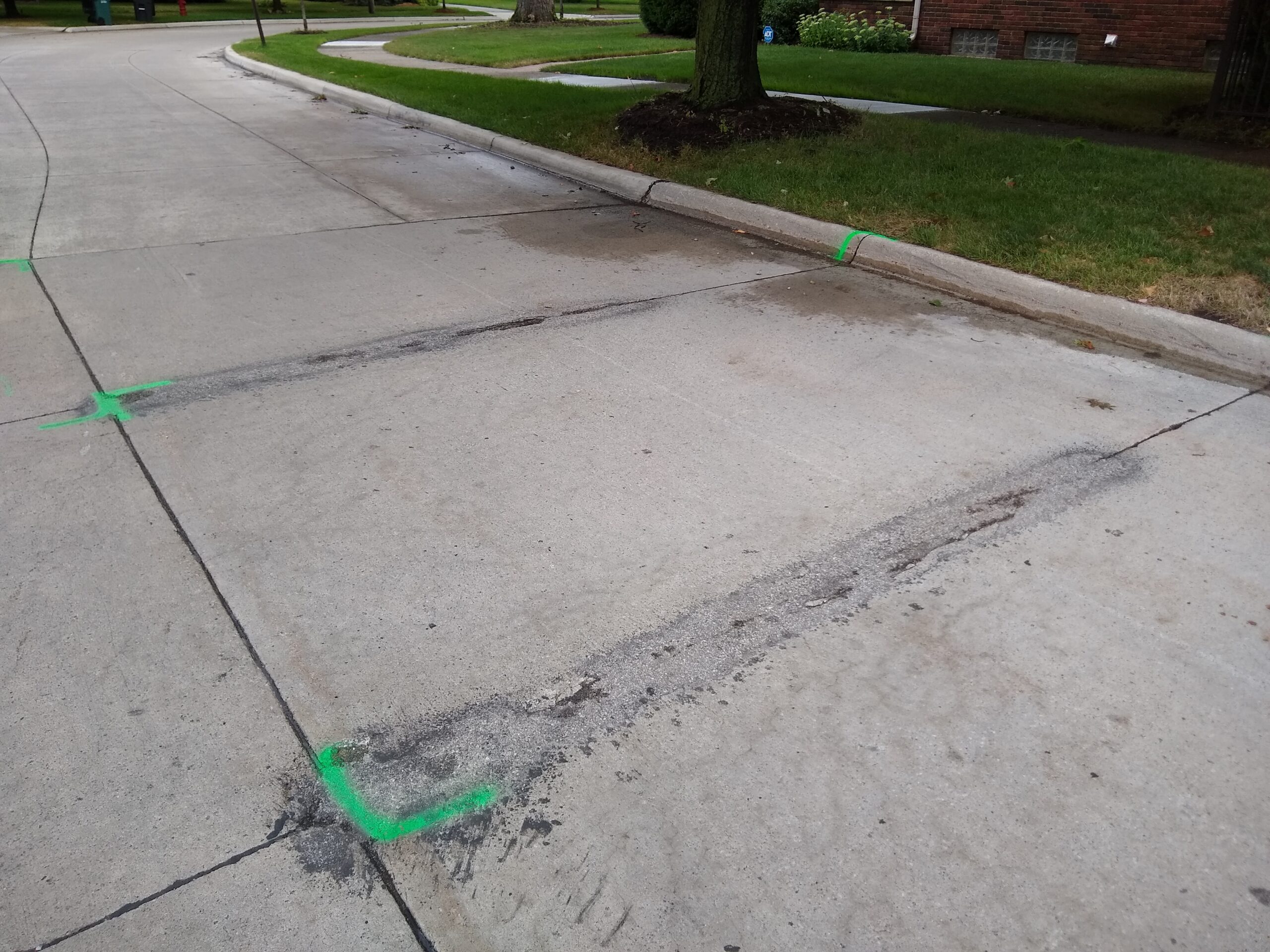
You may have noticed the new street signs at Cambridge and Woodward. These are a new style of sign that we will be installing as needed in the City. The first batch of these signs are being installed at intersections along Woodward. Following is further information about the new signs:
- We are moving away from the old black and gold signs for a few reasons: 1) they do not meet MMUTCD standards for legibility, 2) the font is too narrow and is not visible at night and 3) the new signs are much more legible and reflective, making them much more readable.
- The black and white color scheme was chosen for visibility and legibility, to meet MMUTCD standards, and also to be consistent with Pleasant Ridge’s past street sign appearance. The black and white color scheme matches the signs that we had before the black and gold signs and is also much more legible. We are keeping the attractive design of the black and gold signs, and we matched the font on the black and gold signs while making the lettering wider and thicker.
- We are replacing the signs at Woodward intersections during this first phase. The reason for this is because the decorative black and gold signs that were first installed along Woodward about 15 years ago, and the black and gold signs are now very worn, as you can see in the photos below.
- The black and gold signs are very expensive – about $800 each. The new black and white signs are about $125 each, reducing our cost to replace and maintain the signs as needed. We have about 100 street signs in the City, so the cost difference between the two signs is significant. Just replacing the signs along Woodward would cost $22,400 for the black and gold style, vs. $3,500 for the black and white style.
- Over time we will replace the black and gold signs in town as they wear out. Most of the signs at intersections away from Woodward are in good shape and have a years of life left in them. Of course, if resident sentiment is strongly in favor of changing to the new black and white style, it is cost effective for us to do so and we are happy to hear your input on this.
- Will you have the chance to bid on one of the old black and gold signs at a future PR Foundation auction? Not this year, but quite possibly in the future.
Finally – what is MMUTCD? It’s the Michigan Manual on Uniform Traffic Control Devices, which is a thick set of standards for everything about signs and traffic control.
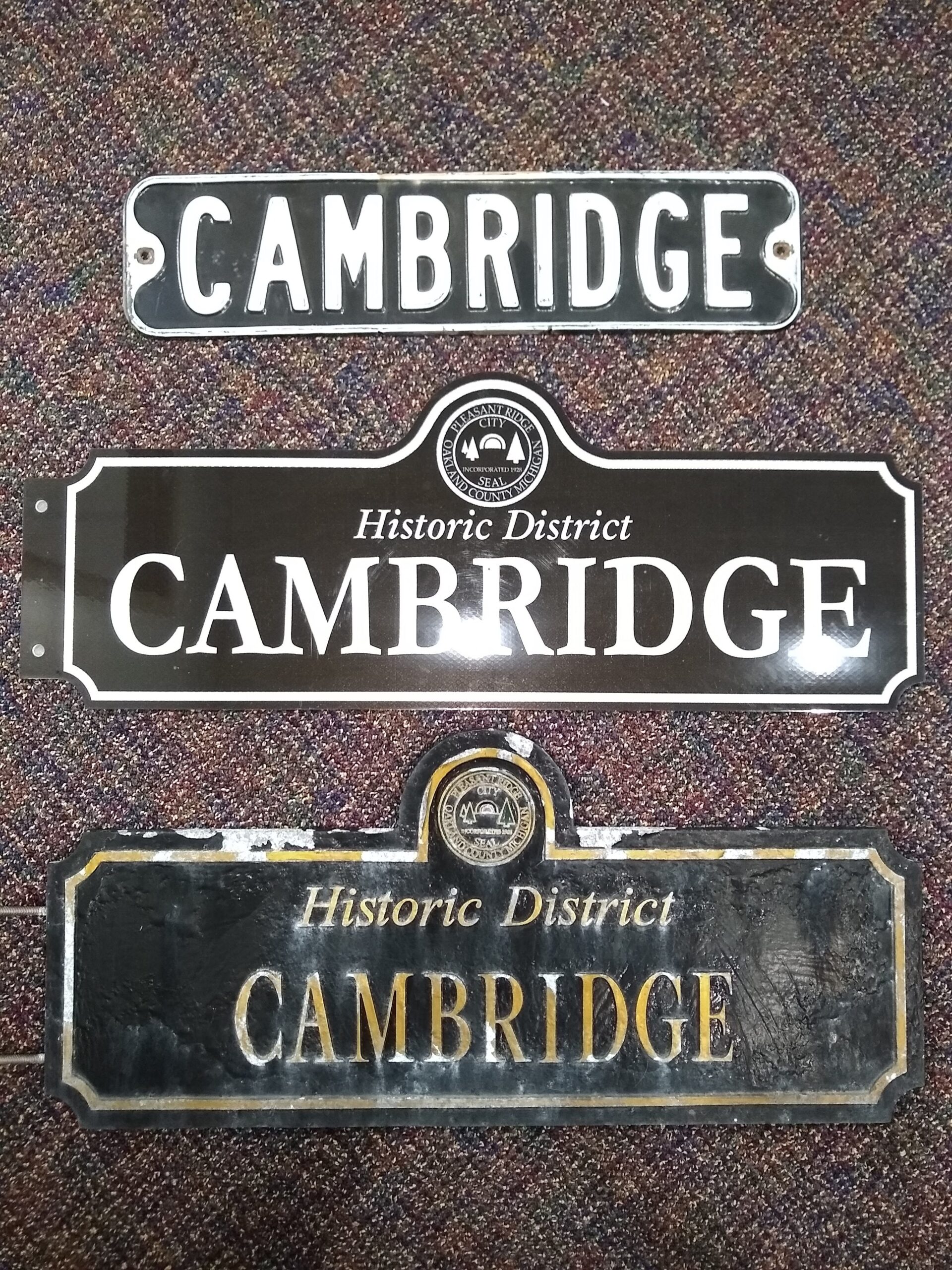
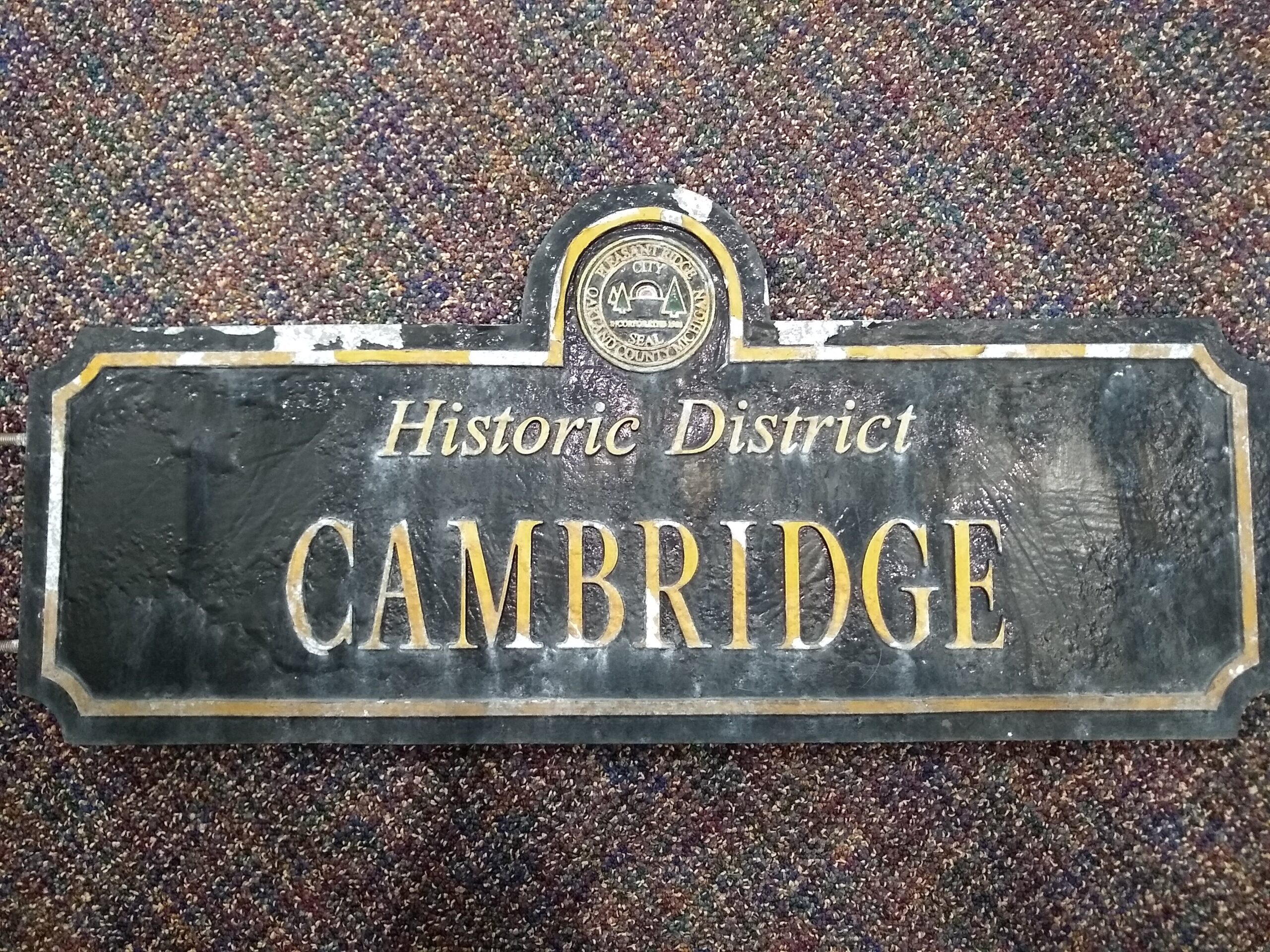
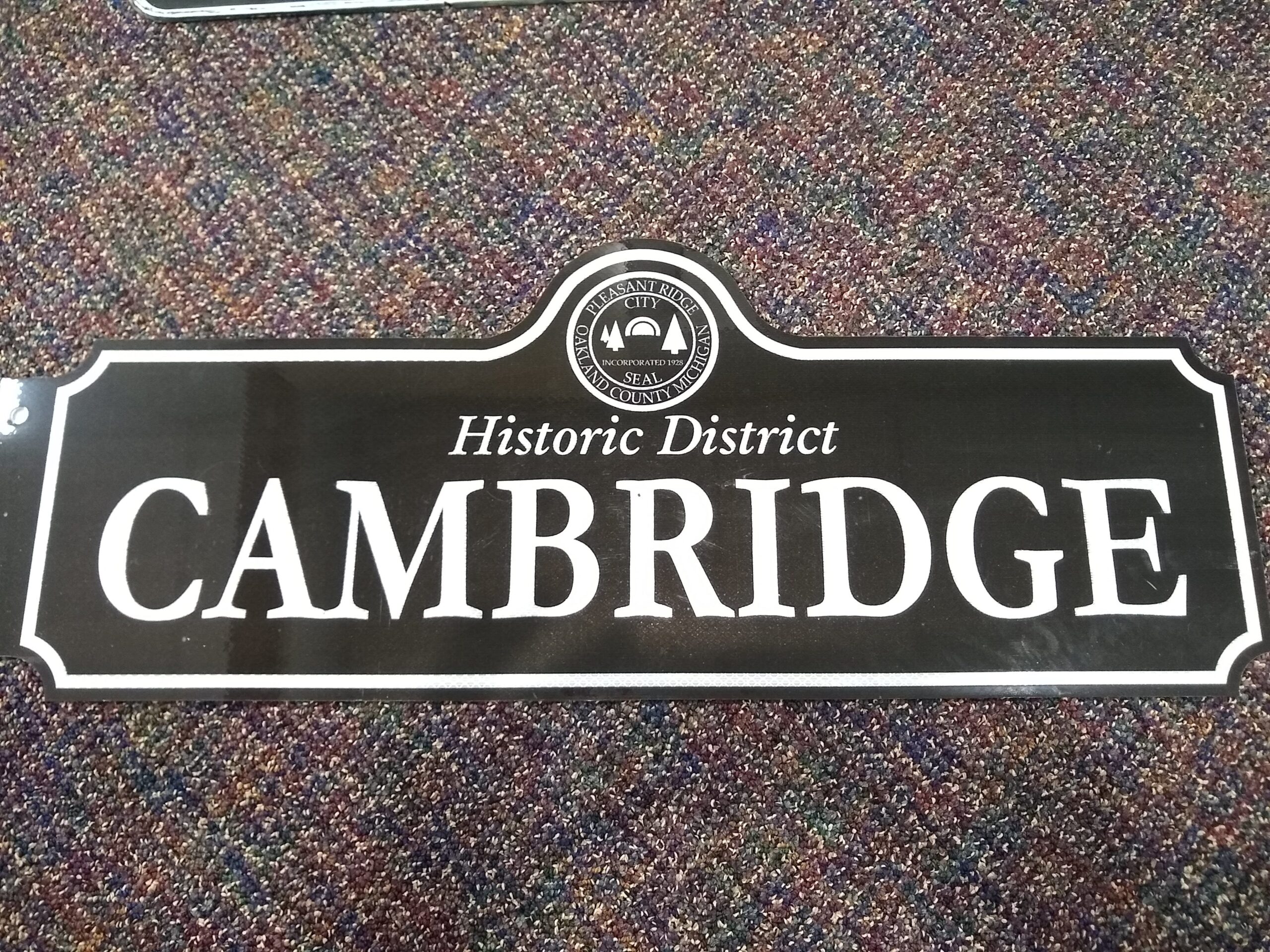
Have you taken the marijuana business survey yet?
If you haven’t, and if you have an opinion about whether Pleasant Ridge should or should not allow marijuana businesses to locate in our City, you can click on link below to take the survey.
The survey is available until Wednesday, May 8.
Recreational Marijuana Business Survey
We need your input!
Pleasant Ridge and Ferndale have partnered on a safety audit of Woodward. This is part of our ongoing efforts to improve the walking and biking experience along our stretch of Woodward from 8 mile to 696.
The study will assess current conditions, engage the community, and provide detailed design recommendations walking and biking along and across Woodward safer and more enjoyable. Toole Design, an international sustainable transportation design firm, is leading the study. Primary funding is provided by a $40,000 SEMCOG grant.
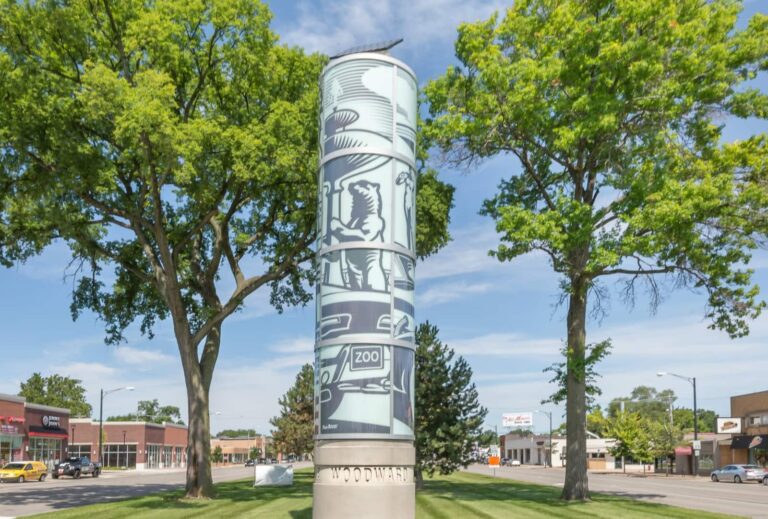
You can get involved in this process in the following ways:
- Complete this community survey.
- Mark your calendar for 6pm-8pm on Thursday, April 18 for a walking audit of Woodward led by Toole Design. We will walk a portion of the route and assess current conditions. Meet at the northwest corner of 9 and Woodward in front of the Rust Belt Market. RSVP at this link (available Thursday, March 28).
- Keep up to date at the project website – more details and materials will be posted as the project progresses.
If you have any additional questions, please contact Ferndale Planning Manager Justin Lyons at jlyons@ferndalemi.gov or Pleasant Ridge City Manager Jim Breuckman at citymanager@cityofpleasantridge.org.
Have an opinion or an observation about the stop for pedestrian signs on Ridge at Oakland Park? Then please share them with us by completing a short survey at this link.
We will consider making the pedestrian signs permanent in the spring based on our observations of the test and your input.
The survey will remain open until Wednesday, October 3.
